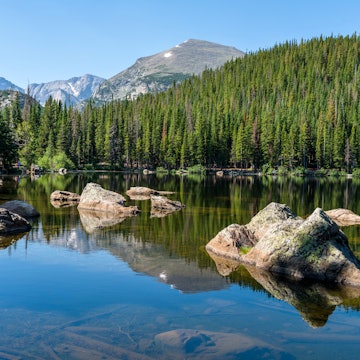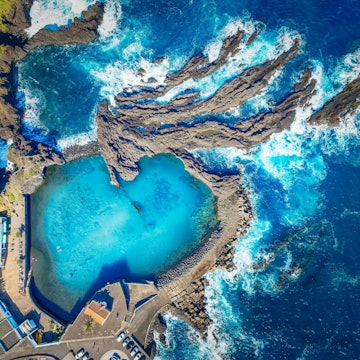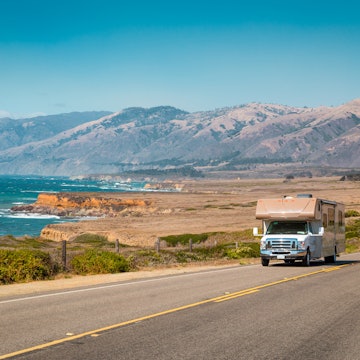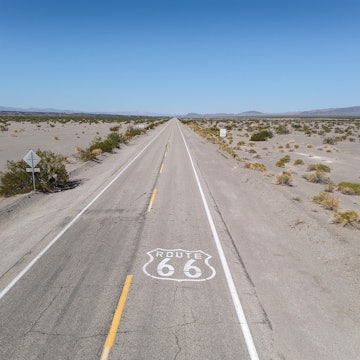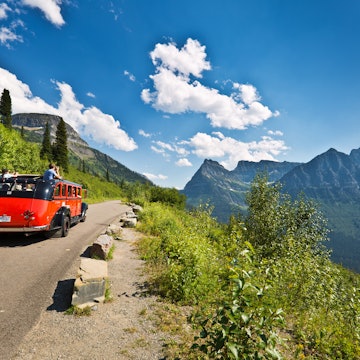
Is glamping going to be the new social distancing travel trend?
Jun 23, 2020 • 6 min read

© courtesy of HipCamp
Over the past fifteen years, glamping has gone from a hip niche in the UK to a perennially popular lodging favorite around the world. Travelers' taste for bell tents, Airstreams, eco-pods, yurts, tiny homes and treehouses has been driven by a desire for adventurous, sustainable experiences. And that extends from activities to eats all the way to your accommodations at the end of the day.
From music festivals to eco-retreats, from nature preserves to NASCAR rallies, from safari camps to urban caravan parks to heirloom farms and historic ranches, the travel industry has fully embraced the trend. And thanks the roller coaster year that's been 2020, it's not going away any time soon.

Increased bookings at glamping sites
While the COVID-19 pandemic temporarily shut down the travel industry this spring– including camping and glamping – these are some of the first types of lodging to rebound as travelers look for ways to social distance while also finding a change of scenery.
Even in early March, when reopening was still months away, The Guardian reported that UK glamping sites like Canopy and Stars, and Host Unusual had already seen a surge in bookings that are up 33–45% not just from the month prior, but the year before. Though those numbers may have been dampened by the fact that England is only just now permitting campsites to reopen on July 4, that early surge hints that demand may be bigger than ever as glampers get back outside.
In the United States, early data paints a similar picture. Alyssa Ravasio, the the founder and CEO of HipCamp – a site that functions a little like AirBnB for private landowners who want to host campers – notes that many of the major glamping hubs in California, Oregon, and Colorado are still on stay-at-home orders. But in states that have a head start on opening back up, like those throughout the southeast, glampers are already eagerly booking sites.

Is glamping for me?
There are a lot of reasons why glamping is the go-to for travelers with cabin fever. For one, it doesn’t require expensive outdoor gear or any serious technical knowledge on how to set up camp, filter water, or start a fire. Even if you don't have any wilderness skills and the only backpack you own has a laptop pocket, you can still enjoy the health benefits of activities like forest bathing or simply sleeping under the stars.
Glamping also makes the outdoors available to people who might have other barriers to getting outside. Sites like Glampinghub, for example, allow users to search specifically for wheelchair-accessible lodging, too, helping disabled campers take advantage of some of the same wellness benefits as abled outdoor enthusiasts. Many state parks offer yurts and cabins designed for use by those who rely on mobility aids. And Oregon announced earlier this year that its state parks would have special programing to make certain visits free not only for the disabled, but also queer campers and outdoor adventurers of color.

BIPOC (Black, Indigenous, and people of color) have historically had reduced access to outdoor spaces and have been discouraged from participating in outdoor recreation, while members of the queer and trans communities, who already face higher incidents of violence in their communities, often feel extra vulnerable about heading into remote, rural areas.
The 2018 Outdoor Participation Report by the Outdoor Industry Association found that while 49% of the US population participated in an outdoor activity at least once the previous year, just 9% of those participants were Black, while 10% were Hispanic, and only 6% were Asian. Those numbers ticked up a percentage or two by the time the 2019 report was compiled, but white people continue to be the largest, most visible segment in the camping space.
For those who didn't grow up camping or seeing themselves in ads for tents, boots and other gear, glamping can be an inviting way to get more comfortable with taking up space outdoors.
"People who currently don't feel welcome outside – and maybe they aren't actually safe outside – that's a lot of where we focus as a company," explained Ravasio of Hipcamp’s express prioritization of inclusivity. "Glamping is such a great way to kind of make an easy, low effort transition into your first outdoor experience."
Sustainable glamping
Another appealing aspect of glamping is how it’s often intertwined with sustainability. From the earliest days of the trend, hosts and travelers alike have seen glamping as a type of ecotourism. Even semi-permanent structures like yurts and bell tents have less of an impact of their environment than, say, a full-scale hotel. And because so many of the amenities are reusable, less waste is generated than with even traditional car camping.
Glamping can also act as an incentive for landowners who might otherwise be farming or ranching to conserve their properties, and encourage rewilding. That’s an attractive bonus for some 70% of travelers who revealed a preference for booking eco-friendly accommodations in a 2019 report by Booking.com.

“If we want future generations to care more about the outdoors and to really help restructure our society we need a lot more people excited about the land,” says Ravasio. “A lot of our hosts are using the income they earn on HipCamp directly to protect and restore their habitat. We have those who are replanting their forests or restoring their watershed.”
Social distancing while glamping
Now in addition to the accessibility, inclusivity, and sustainability of glamping, even more travelers are seeing this style of travel has one that gives them an extra feeling of safety and control post-pandemic. The ability to limit contact with other guests, to be outside in the fresh air, and even bring along household pets to some venues all have appeal for health-conscious tourists.
Glampgrounds around the world make it easy to stick to guidelines issued by public health agencies such as the CDC, which recommends physical activity as key to staying physically and mentally well, and suggests visiting outdoor spaces close to home where you can practice social distancing.

Even more than state and national parks, which are often crowded in peak season and may have hotel-style lodging or cabins in close quarters, private glampgrounds give people a sense of privacy and the ability to maintain their own household’s space. Some glampgrounds are taking extra precautions, too, like Valley Center Glamping in San Diego County, California, which is taking the temperature of every camper on arrival, even though tents are already at least 35ft apart on the property.
Meanwhile, as Europe approaches its phased re-opening strategy, glampgrounds and caravan sites are often some of the first types of accomodations allowed to resume business. France, for example, permitted most campers to get back outside in early June. Portugal’s campsites are back open, as are those in the Netherlands and the Czech Republic.

In Northern Ireland, both indoor hotels, guest houses and B&Bs as well as holiday and home parks, caravan sites, and self-catering properties were originally slated for a July 20 re-opening date, but only the latter were under consideration for an earlier resumption of business. Wales, meanwhile, stated outdoor attractions and “self-contained accommodation” will be permitted to open back up starting July 6 and July 13, respectively. As for England, "Hotels, holiday apartments, campsites and caravan parks" will be open again from July 4, "but shared facilities must be cleaned properly."
In other words, grab you're s'mores kit and keys – glamping may have been around for over a decade, but the age of outdoor glamor is just getting started.
You may also like:
The best glamping getaways in North America for under $150
10 of the most remote glamping spots in the world
See these new glamping spots around England
Why RVs are the latest trend in travel





